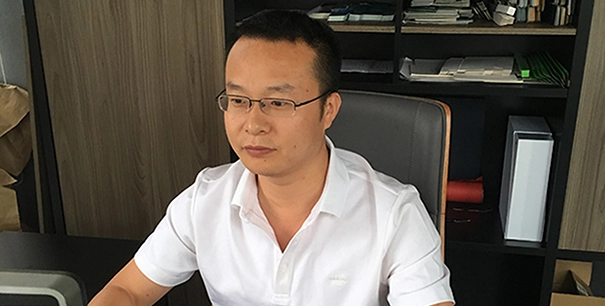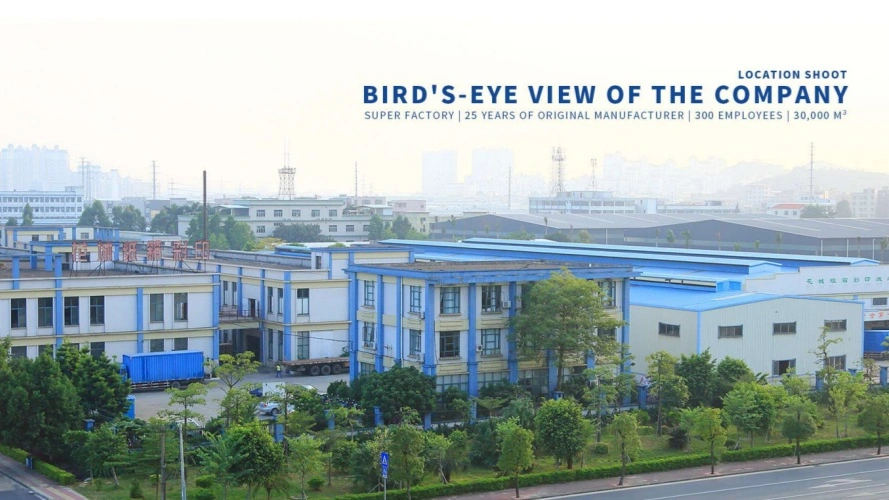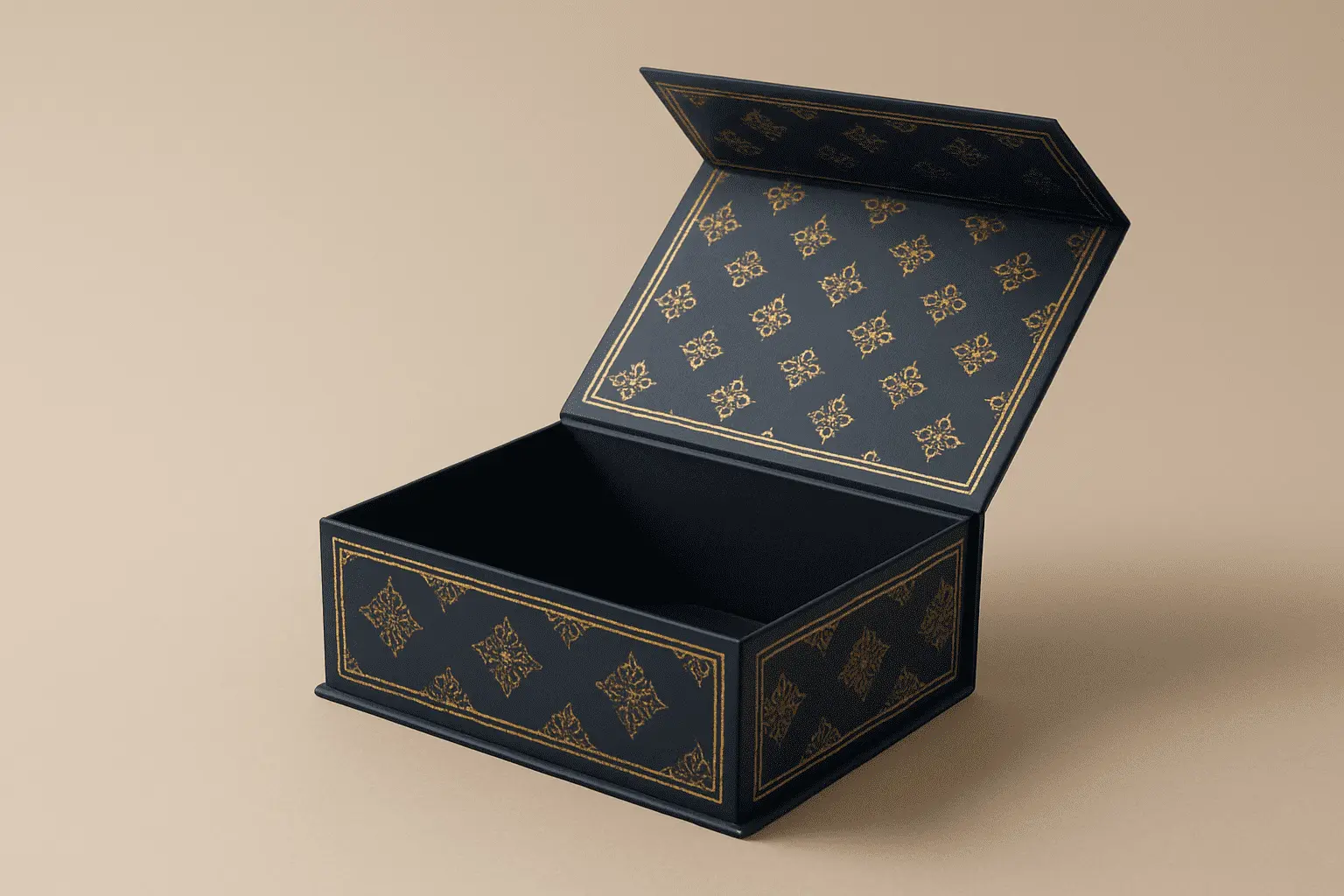How to Budget for Subscription Box Packaging Costs?
Managing packaging costs effectively is crucial for subscription box businesses seeking sustainable profitability. As the subscription box industry continues to expand, understanding how to allocate your budget for packaging materials, design, and production becomes increasingly important. The key to successful budgeting lies in balancing cost efficiency with quality, ensuring your subscription box packaging protects products while creating memorable unboxing experiences. Subscription boxes require durable, lightweight packaging solutions that can withstand shipping demands while reflecting your brand identity. By implementing strategic budgeting approaches, businesses can optimize their packaging investments, reduce waste, and maintain competitive pricing while delivering exceptional value to subscribers.

Key Cost Components in Subscription Box Packaging
Material Selection and Pricing Strategies
The foundation of any subscription box budget begins with understanding material costs and their impact on overall expenses. Premium materials like SBS C1S (Solid Bleached Sulfate – Coated One Side) offer exceptional print quality with bright white appearance and excellent structural integrity, making them ideal for high-end subscription box applications. This material, produced from 100% virgin bleached wood pulp, provides superior surface quality for offset and digital printing, supporting vibrant color reproduction essential for subscription box branding. However, the premium nature of SBS C1S typically commands higher prices, requiring careful consideration of your target market and profit margins. For budget-conscious subscription box operations, CCNB (Clay Coated News Back) presents an economical alternative that maintains decent print quality while significantly reducing material costs. This recycled fiber-based material features a white clay-coated front surface suitable for subscription box graphics, while the grey recycled back provides adequate structural strength. The cost savings achieved through CCNB can be substantial, often reducing material expenses by 30-40% compared to premium substrates, making it particularly attractive for subscription box startups or businesses targeting price-sensitive markets. Corrugated materials offer another dimension of cost consideration for subscription box packaging. Single wall options like E Flute (1.3-2.1mm thick) provide ultra-thin profiles with excellent crush resistance, ideal for subscription box applications where space efficiency and premium graphics matter. The 90 flutes per linear foot construction delivers smooth surfaces perfect for high-quality printing while minimizing material usage and associated costs. For subscription box businesses requiring enhanced protection, double wall configurations like E/C Flute combine printable surfaces with strong core structures, though at increased material costs.
Production Volume Economics
Understanding the relationship between production volumes and per-unit costs is essential for subscription box budgeting. Manufacturing subscription box packaging follows economies of scale principles, where larger quantities typically yield lower per-unit costs. Initial setup costs, including die-cutting tools, printing plates, and color matching, represent fixed expenses that distribute across production runs. For subscription box businesses, minimum order quantities often range from 1,000 to 5,000 units, with significant cost reductions available at higher volumes. The production process for subscription box packaging involves multiple stages, each contributing to overall costs. Printing represents a major expense component, whether utilizing offset, digital, or flexographic methods. Offset printing typically offers the lowest per-unit costs for subscription box orders exceeding 5,000 units, while digital printing provides flexibility for smaller runs or variable data applications. Surface finishing options, including UV coating, matte or gloss treatments, can enhance subscription box appeal but add 15-25% to base printing costs. Post-press operations significantly impact subscription box budgeting considerations. Die-cutting creates precise shapes and fold lines essential for subscription box functionality, with custom dies representing one-time tooling investments ranging from $200-800 depending on complexity. Gluing and assembly processes, whether manual or automated, contribute labor costs that vary based on subscription box design complexity and production volumes. Automated assembly can reduce per-unit labor costs for high-volume subscription box operations while maintaining consistent quality standards.
Design Complexity and Customization Costs
The intricacy of subscription box design directly correlates with production costs and budget requirements. Simple rectangular subscription box designs with standard printing require minimal die-cutting complexity and can utilize existing tooling, reducing setup costs. However, innovative subscription box designs featuring unique shapes, window cutouts, or complex folding patterns necessitate custom die creation and potentially specialized equipment, increasing both initial investment and per-unit production costs. Customization options for subscription box packaging span a wide spectrum of possibilities and associated costs. Basic customization includes logo placement, color schemes, and standard graphics, typically adding 10-20% to base packaging costs. Advanced customization incorporating premium finishes like foil stamping, embossing, or spot UV treatments can increase costs by 40-60% while creating distinctive subscription box experiences that justify premium pricing. The key lies in balancing customization investment with market positioning and customer expectations for your subscription box offerings. Prototyping represents another crucial cost consideration in subscription box development. Professional prototyping services typically range from $500-2,000 depending on design complexity and iteration requirements. While this represents upfront investment, proper prototyping prevents costly production errors and ensures subscription box functionality meets requirements. Many manufacturers offer virtual prototyping services that can reduce physical prototyping costs while providing realistic visualizations of finished subscription box products.
Cost-Effective Material Options for Different Business Sizes
Startup and Small Business Solutions
Emerging subscription box businesses face unique budgeting challenges, requiring cost-effective solutions that don't compromise quality or brand integrity. Brown Kraft paper presents an excellent entry-level option for subscription box packaging, offering high tensile strength and tear resistance while maintaining affordable pricing. The natural brown appearance aligns perfectly with eco-conscious subscription box brands targeting environmentally aware consumers, while the slightly coarse surface texture provides authentic, rustic appeal that differentiates products in crowded markets. For subscription box startups requiring enhanced visual appeal, CCNB materials strike an optimal balance between cost and quality. The clay-coated front surface enables high-quality printing for subscription box graphics, while the recycled content supports sustainability messaging increasingly important to modern consumers. Production minimums for CCNB subscription box packaging typically start at 1,000 units, making it accessible for small-scale operations testing market viability before committing to larger investments. Single wall corrugated options, particularly E Flute configurations, offer lightweight yet protective solutions ideal for subscription box applications. The 90 flutes per linear foot construction provides smooth printing surfaces while maintaining structural integrity essential for shipping protection. Material costs for E Flute subscription box packaging typically range 20-30% below thicker alternatives while delivering comparable performance for most product categories. This cost advantage becomes particularly significant for subscription box businesses operating on tight margins during growth phases.
Mid-Size Business Optimizations
Established subscription box operations with proven market traction can leverage economies of scale while exploring premium material options that enhance brand positioning. SBS C2S (Solid Bleached Sulfate, Coated Two Sides) offers exceptional versatility for subscription box applications requiring double-sided printing capability. The smooth, high-gloss surface on both sides ensures excellent print quality with vibrant color reproduction, while the virgin bleached pulp construction provides hygienic properties suitable for food or cosmetic subscription box contents. Mid-size subscription box businesses can optimize costs through strategic material selection based on seasonal demands or product categories. Premium materials like metallic papers can be reserved for special edition subscription box offerings or holiday promotions, commanding higher prices that offset increased material costs. Standard subscription box shipments can utilize cost-effective materials like CCNB, creating tiered packaging strategies that maximize profit margins while maintaining brand consistency across different product lines. Double wall corrugated options become economically viable for mid-size subscription box operations requiring enhanced protection for valuable or fragile contents. E/C Flute combinations provide balanced performance with printable surfaces and strong core structures, ideal for subscription box applications where presentation and protection must coexist. The approximately 4.5-5mm thickness offers substantial protection while remaining cost-effective compared to premium single wall alternatives for heavy-duty applications.
Enterprise-Level Strategies
Large-scale subscription box operations benefit from comprehensive packaging strategies that optimize costs across multiple product lines and market segments. Enterprise-level businesses can negotiate preferential pricing for premium materials like SBS C1S through volume commitments and long-term partnerships with manufacturers. These relationships often include value-added services such as inventory management, just-in-time delivery, and dedicated customer service support that reduce operational complexity while controlling costs. Sophisticated subscription box enterprises often implement multi-tier packaging strategies utilizing different materials for various market segments. Premium subscription box offerings targeting luxury markets justify higher material costs through enhanced unboxing experiences and superior protection. Standard tier products utilize optimized materials like CCNB that maintain quality while controlling costs, allowing competitive pricing in mass markets. This strategic approach maximizes revenue potential while maintaining appropriate margins across diverse customer segments. Advanced production planning enables enterprise subscription box operations to optimize material utilization and reduce waste. Large-scale operations can coordinate production schedules to maximize press runs and minimize setup costs, often achieving per-unit costs 40-50% below small-scale production. Additionally, enterprise businesses can invest in specialized equipment or processes that further reduce long-term production costs while maintaining quality standards essential for subscription box success.
Long-Term Budget Planning and ROI Considerations
Investment Timeline and Payback Analysis
Successful subscription box budgeting requires comprehensive understanding of investment timelines and expected returns on packaging expenditures. Initial packaging investments, including design development, prototyping, and tooling costs, typically require 6-12 months to achieve full payback through operational efficiencies and customer satisfaction improvements. Subscription box businesses must factor these timeline considerations into cash flow planning, ensuring adequate working capital during the investment recovery period. Premium packaging materials and advanced customization options often command longer payback periods but can significantly enhance customer retention and word-of-mouth marketing for subscription box services. Industry data suggests that well-designed subscription box packaging can increase customer lifetime value by 15-25% through improved unboxing experiences and brand loyalty. This enhanced value proposition justifies higher packaging investments while providing measurable returns through reduced customer acquisition costs and increased subscription renewals. Long-term subscription box success depends on balancing packaging costs with operational efficiency and customer satisfaction metrics. Businesses investing in durable, well-designed packaging often experience reduced damage claims, lower return rates, and improved customer reviews – all contributing to long-term profitability. Tracking these metrics provides valuable data for optimizing future packaging investments and demonstrates ROI on packaging expenditures to stakeholders and investors.
Scalability and Growth Considerations
Forward-thinking subscription box businesses must consider packaging scalability when developing long-term budgets and operational strategies. Packaging solutions that work effectively at 1,000 units monthly may prove inadequate or inefficient at 10,000 units monthly, requiring strategic planning for growth transitions. Modular packaging designs and standardized components can facilitate scaling while maintaining cost efficiency across different volume levels. Growth-oriented subscription box operations benefit from establishing relationships with manufacturers capable of supporting expansion requirements. Partnering with facilities equipped with advanced machinery, including KBA106-(9+1) UV printing machines and Heidelberg XL162-6L printing equipment, ensures consistent quality and capacity availability during rapid growth phases. These partnerships often include preferential pricing structures that reward loyalty and volume commitments, supporting long-term cost optimization objectives. International expansion introduces additional complexity to subscription box packaging budgeting, requiring consideration of shipping regulations, material certifications, and local market preferences. FSC certification and environmental compliance become increasingly important for global subscription box operations, potentially requiring premium materials that support sustainability messaging. However, these investments often pay dividends through enhanced brand reputation and access to environmentally conscious market segments commanding premium pricing.
Conclusion
Effective budgeting for subscription box packaging costs requires strategic balance between cost control and quality investment. By understanding material options, production economics, and long-term ROI considerations, businesses can optimize their packaging investments while delivering exceptional customer experiences. Success depends on aligning packaging strategies with business objectives, market positioning, and growth plans. Smart subscription box operators leverage economies of scale, strategic material selection, and manufacturer partnerships to achieve sustainable cost structures that support profitable growth.
For subscription box businesses seeking professional packaging solutions, partnering with experienced manufacturers ensures access to advanced capabilities and cost-effective production. As a leading China subscription box factory with over 20 years of experience, we specialize in comprehensive packaging solutions for subscription box applications. Our China subscription box supplier capabilities include advanced printing technology, diverse material options, and customized design services tailored to your specific requirements.
Our China subscription box manufacturer facility spans 35,000 m² with 300+ employees and serves over 1,000 loyal customers worldwide. We offer competitive subscription box wholesale pricing and maintain extensive inventory of subscription box for sale in various configurations. Contact us at public@fetchingprinting.com for detailed subscription box price quotes and consultation on optimizing your packaging budget while achieving your quality and branding objectives.
References
1. Anderson, M. & Roberts, J. (2023). Packaging Economics in E-commerce: Cost Optimization Strategies for Subscription Services. Journal of Business Logistics, 44(2), 78-94.
2. Chen, L., Thompson, K. & Martinez, R. (2022). Sustainable Packaging Materials: Environmental and Economic Analysis for Direct-to-Consumer Brands. International Packaging Research, 15(3), 112-128.
3. Williams, D. & Foster, S. (2023). Consumer Unboxing Experiences: Impact on Brand Loyalty and Lifetime Value in Subscription Markets. Marketing Science Quarterly, 28(4), 203-219.
4. Johnson, P., Lee, H. & Brown, A. (2022). Supply Chain Cost Management in Subscription Box Industries: Material Selection and Volume Economics. Operations Management Review, 31(1), 45-62.

Based on your location and order quantity, you will have the opportunity to receive a limited time free shipping promotion!

Corporate Purpose
